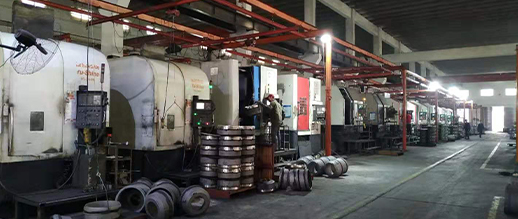
-
 Afrikaans
Afrikaans -
 Albanian
Albanian -
 Amharic
Amharic -
 Arabic
Arabic -
 Armenian
Armenian -
 Azerbaijani
Azerbaijani -
 Basque
Basque -
 Belarusian
Belarusian -
 Bengali
Bengali -
 Bosnian
Bosnian -
 Bulgarian
Bulgarian -
 Catalan
Catalan -
 Cebuano
Cebuano -
 Corsican
Corsican -
 Croatian
Croatian -
 Czech
Czech -
 Danish
Danish -
 Dutch
Dutch -
 English
English -
 Esperanto
Esperanto -
 Estonian
Estonian -
 Finnish
Finnish -
 French
French -
 Frisian
Frisian -
 Galician
Galician -
 Georgian
Georgian -
 German
German -
 Greek
Greek -
 Gujarati
Gujarati -
 Haitian Creole
Haitian Creole -
 hausa
hausa -
 hawaiian
hawaiian -
 Hebrew
Hebrew -
 Hindi
Hindi -
 Miao
Miao -
 Hungarian
Hungarian -
 Icelandic
Icelandic -
 igbo
igbo -
 Indonesian
Indonesian -
 irish
irish -
 Italian
Italian -
 Japanese
Japanese -
 Javanese
Javanese -
 Kannada
Kannada -
 kazakh
kazakh -
 Khmer
Khmer -
 Rwandese
Rwandese -
 Korean
Korean -
 Kurdish
Kurdish -
 Kyrgyz
Kyrgyz -
 Lao
Lao -
 Latin
Latin -
 Latvian
Latvian -
 Lithuanian
Lithuanian -
 Luxembourgish
Luxembourgish -
 Macedonian
Macedonian -
 Malgashi
Malgashi -
 Malay
Malay -
 Malayalam
Malayalam -
 Maltese
Maltese -
 Maori
Maori -
 Marathi
Marathi -
 Mongolian
Mongolian -
 Myanmar
Myanmar -
 Nepali
Nepali -
 Norwegian
Norwegian -
 Norwegian
Norwegian -
 Occitan
Occitan -
 Pashto
Pashto -
 Persian
Persian -
 Polish
Polish -
 Portuguese
Portuguese -
 Punjabi
Punjabi -
 Romanian
Romanian -
 Russian
Russian -
 Samoan
Samoan -
 Scottish Gaelic
Scottish Gaelic -
 Serbian
Serbian -
 Sesotho
Sesotho -
 Shona
Shona -
 Sindhi
Sindhi -
 Sinhala
Sinhala -
 Slovak
Slovak -
 Slovenian
Slovenian -
 Somali
Somali -
 Spanish
Spanish -
 Sundanese
Sundanese -
 Swahili
Swahili -
 Swedish
Swedish -
 Tagalog
Tagalog -
 Tajik
Tajik -
 Tamil
Tamil -
 Tatar
Tatar -
 Telugu
Telugu -
 Thai
Thai -
 Turkish
Turkish -
 Turkmen
Turkmen -
 Ukrainian
Ukrainian -
 Urdu
Urdu -
 Uighur
Uighur -
 Uzbek
Uzbek -
 Vietnamese
Vietnamese -
 Welsh
Welsh -
 Bantu
Bantu -
 Yiddish
Yiddish -
 Yoruba
Yoruba -
 Zulu
Zulu
How frequently should drum brakes be serviced for optimal performance and safety?
How Often Should Drum Brakes Be Replaced?
Drum brakes have been a staple in the automotive brake systems for decades, primarily due to their efficiency, reliability, and cost-effectiveness. However, like all automotive components, drum brakes wear out over time and require replacement. Understanding how often drum brakes should be replaced is crucial for maintaining vehicle safety and performance.
Understanding Drum Brakes
Before discussing replacement frequency, it’s important to understand how drum brakes function. Unlike disc brakes, which use a caliper to squeeze two pads against a rotating disc, drum brakes operate by expanding shoes inside a drum. When the brake pedal is pressed, hydraulic pressure forces the brake shoes against the drum's inner surface, creating friction and slowing the vehicle.
Drum brakes are typically found on the rear wheels of many vehicles, although some cars use them on all four wheels. They are more susceptible to heat buildup and moisture than disc brakes, which can affect their performance over time.
Signs That Your Drum Brakes Need Replacement
Rather than adhering strictly to a mileage schedule, it’s often more effective to monitor the condition of your drum brakes. Here are some signs that indicate it may be time for a replacement
1. Squeaking or Grinding Noise If you hear a high-pitched squeak or a grinding sound when applying the brakes, it’s likely that the brake shoes are worn down and need to be replaced. The noise serves as an indicator that the friction material has worn away, potentially causing damage to the drum itself.
how often should drum brakes be replaced

3. Vibration or Pulsation Feeling vibrations in the brake pedal may suggest that the drum is warped or unevenly worn, necessitating either resurfacing or replacement.
4. Visual Inspection Regular visual inspections can help catch wear early. Look for cracks, chips, or unusual wear patterns on the brake shoes and drum. If the shoes appear thin or the drum's surface is deeply scored, it’s time for a replacement.
Recommended Replacement Interval
While the factors mentioned above help identify the need for replacements, many experts recommend checking or replacing drum brakes every 30,000 to 50,000 miles. However, this interval can vary based on several factors
- Driving Habits Frequent stop-and-go driving, aggressive braking, or driving in hilly areas may lead to more rapid wear. - Vehicle Type Heavier vehicles or those regularly loaded with heavy cargo may require more frequent brake maintenance. - Environmental Factors Operating in wet or muddy conditions can accelerate wear and may require more frequent inspections. The Importance of Regular Maintenance
Regular maintenance can help extend the life of your drum brakes. It’s essential to have your brakes inspected at regular intervals or at least during every oil change. Technicians can check for wear on the brake shoes and drums, as well as evaluate the brake fluid level and overall brake system performance.
Additionally, when replacing drum brakes, it’s crucial to replace them in pairs to ensure balanced braking performance. If one drum and shoe set are worn and need replacing, the other side may not be far behind.
Conclusion
In summary, while a general guideline suggests replacing drum brakes every 30,000 to 50,000 miles, the precise frequency depends on driving habits, vehicle type, and environmental conditions. Paying attention to warning signs and conducting regular inspections can help ensure optimal braking performance and safety. Remember, maintaining your braking system is not just about extending the life of your vehicle; it is fundamentally about keeping you and your passengers safe on the road. If in doubt, always consult a professional mechanic for expert advice tailored to your specific situation.
-
What Are Drum BrakesNewsJul.07,2025
-
Understanding Brake Drum MaterialNewsJul.07,2025
-
Semi-Trailer Brake Drum: A Key Component for Extreme Loads and Long-Distance TransportNewsJul.07,2025
-
Drum Brake Pads for SaleNewsJul.07,2025
-
Brake Drums for SaleNewsJul.07,2025
-
Brake Drum ManufacturerNewsJul.07,2025
-
Aluminum Brake Drums: The Future of High-Performance CarsNewsJul.07,2025
